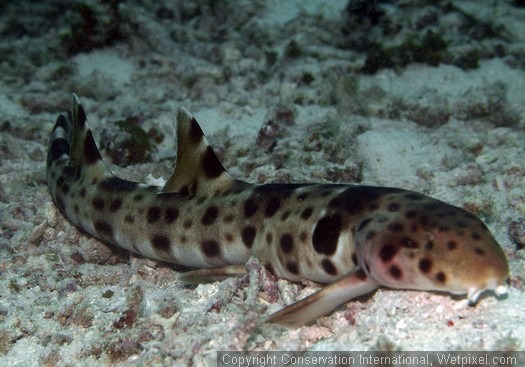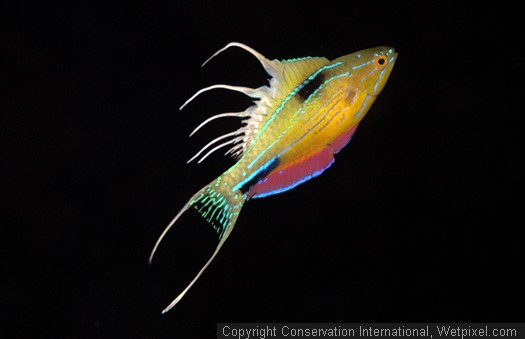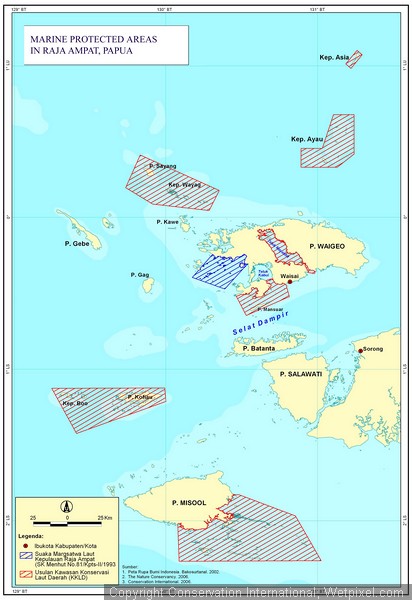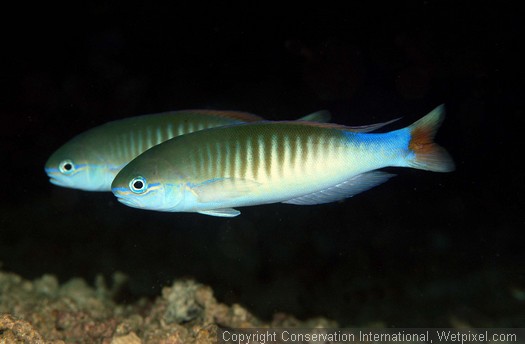Raja Ampat announces tourism entrance fee and tagging system
Press Release
Following the declaration of a network of seven marine protected areas earlier this year, the Raja Ampat Regency Government in West Papua, Indonesia, is pleased to announce the launch of an annual tag system for visitors. The plastic tag is valid for 13 months from the 1st of each calendar year and will cost Rp500,000 (US$55) for international visitors and Rp250,000(US$22) for Indonesian citizens. 70% of the proceeds from the sale will be managed by a multi-stakeholder team for conservation, enforcement and community programs. 30% of the proceeds will go to the Tourism Department for tourism development. The Coral Reef Alliance (CORAL) worked with the diving community and local authorities to develop and socialize of the tag system over the past year.

Raja Ampat and the surrounding Bird’s Head Seascape splashed onto diving headlines over the last few years with the announcement of over 60 new species of fish and invertebrates discovered there during surveys by Conservation International, The Nature Conservancy and Indonesian scientists. Raja Ampat comprises about 610 islands spread over 50,000sq km with spectacular scenery and intact primary rainforest. Preserved by isolation and low population pressures, the underwater scenery is equally enchanting and diverse. Clear water mangroves front up to pristine coral reefs which pulse with huge schools of multi-colored reef fish and a diversity of marine life unrivalled on the planet – Raja Ampat’s reefs have variously been described as “nature’s richest reefs”, “reefs on steroids”, and a “species factory”. From the smallest pygmy seahorse to migrating sperm whales, Raja Ampat has it all.

In fact, the area has the highest recorded marine biodiversity for an area this size anywhere in the world. Nearly 1200 species of fish and 540 species of coral have been recorded here – approximately 70% of the world’s total number of coral species. Experienced divers will be overwhelmed with the number of fish species which can be seen. Renowned ichthyologist , Dr. Gerry Allen recorded an exceptional 284 species on a single dive here.
The exceptional nature of the area is highlighted by an unusual collaboration of international NGOs (Conservation International, The Nature Conservancy and WWF) who all worked together with the Raja Ampat Authorities and local NGOs to define the most valuable areas for protection. The network of 7 MPAs protect a total of 45% of Raja Ampat’s amazing shallow reefs and coastal habitats. These NGOs are continuing to help the government and local communities to develop management plans appropriate for each area.

The new marine protected areas in Raja Ampat have been declared under the auspices of innovative new national legislation, which allows for local government management authority over the MPAs (as opposed to the more traditional approach of central government management of national parks). This decentralized approach has a number of advantages for both setting up and managing the new protected areas, particularly by ensuring that local stakeholders (villager and government) have a much greater input on the areas to be protected and play a significant and direct role in their management. This will be essential if enforcement in such large and remote locations is to be successful. Much of Raja Ampat also has a tradition of reef ownership by local villagers, which has enabled a rapid community buy-in and support for the concepts of reef management and limits on exploitation. In addition, funds collected from visiting tourists stay in the regency and are locally administered, bringing direct tangible benefits to the local community.
While the detailed management plans for each MPA are being worked out, including delineation of a zonation system for each MPA, regulations on fishing gears, and enforcement protocols, the Raja Ampat Fisheries Department has forged ahead with some impressive conservation measures which apply to all marine areas within Raja Ampat. For instance, the Fisheries Department has declared trawling and shark fishing (for fins or otherwise) to be illegal in Raja Ampat, with no permits issued for these activities since 2005. Hookah diving (which is typically used in both blast and cyanide fishing and other highly exploitative fisheries) may soon follow. To be sure, blast and cyanide fishing are illegal throughout Indonesia, but enforcement agents are typically thwarted when these fishers simply dump evidence (explosives and cyanide) overboard when approached by patrols. These same fishers are much less likely to dump their hookah compressors overboard if approached by a patrol, so a ban on hookahs is seen as an effective means of targeting blast and cyanide fishing operations.

In addition to these encouraging efforts by the Fisheries Departments, conservation NGOs have initiated a number of projects to support the overall conservation initiative in Raja Ampat. A network of community conservation radio stations have been operating for nearly two years, skillfully mixing local news and entertainment with specific information about conservation objectives and the potential benefits of properly managing marine resources. Three field stations have been established for reef survey work and monitoring; while a floating patrol station has been built and will soon be launched for use by a joint patrol team consisting of police, fisheries officers and local community members. Community liaison officers have been trained in every village within the MPAs and local NGOs are being engaged to develop community projects. A floating education centre will soon be launched and the on-board multidisciplinary team will spend several days at each of Raja Ampat’s 88 remote villages teaching interactive, activity-based marine conservation education classes to both schoolchildren and adults.
We hope these efforts will help save one of the most spectacular natural environments on our planet and we appreciate your support.
For more information on how to visit Raja Ampat please see www.diverajaampat.org.